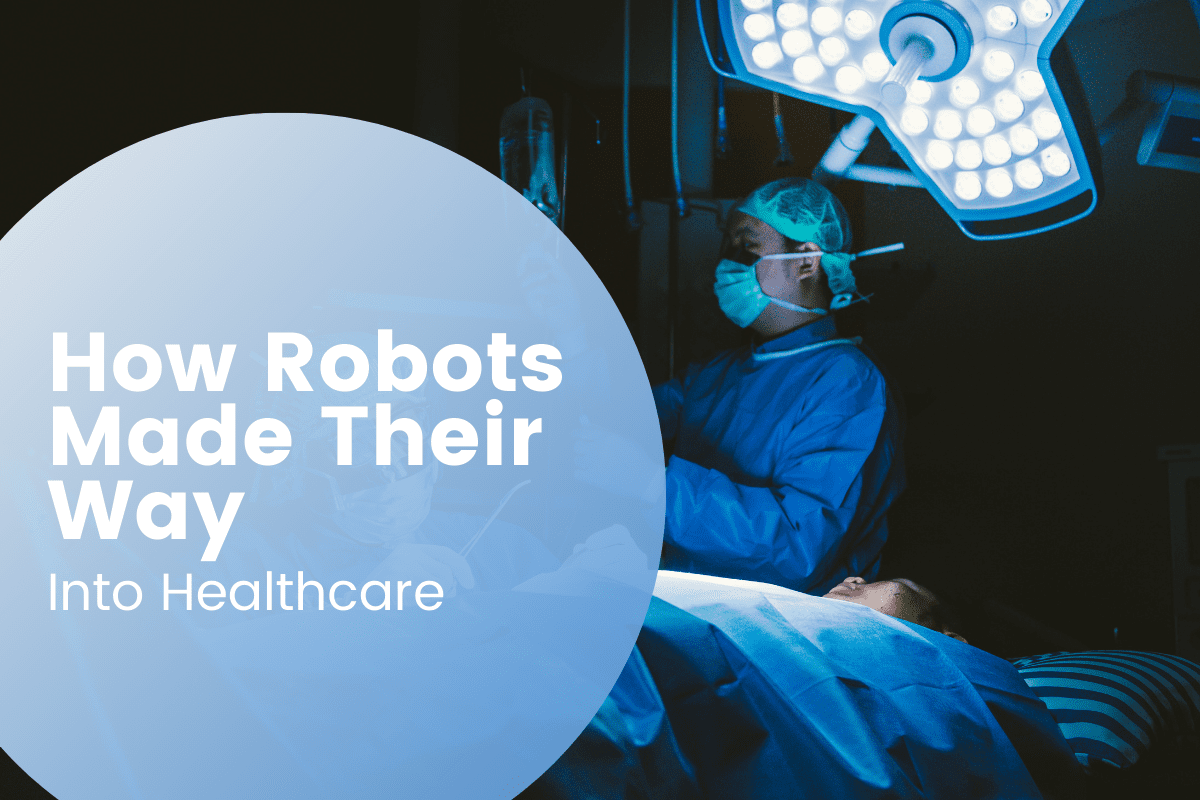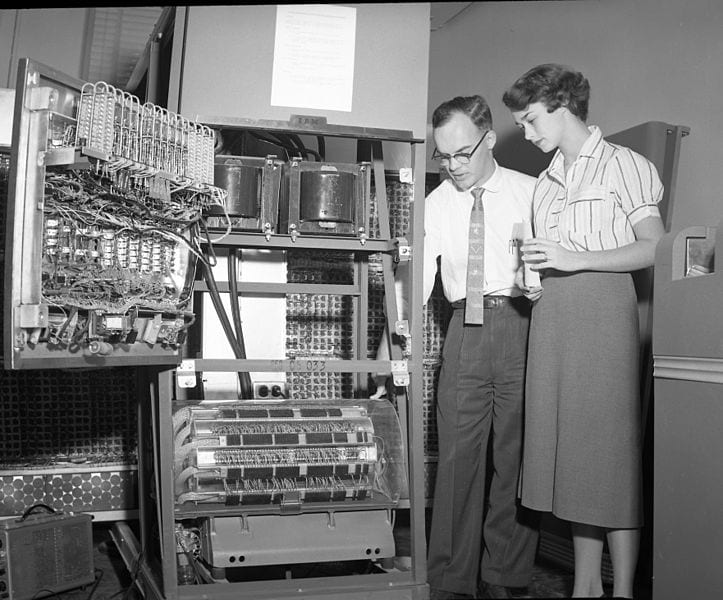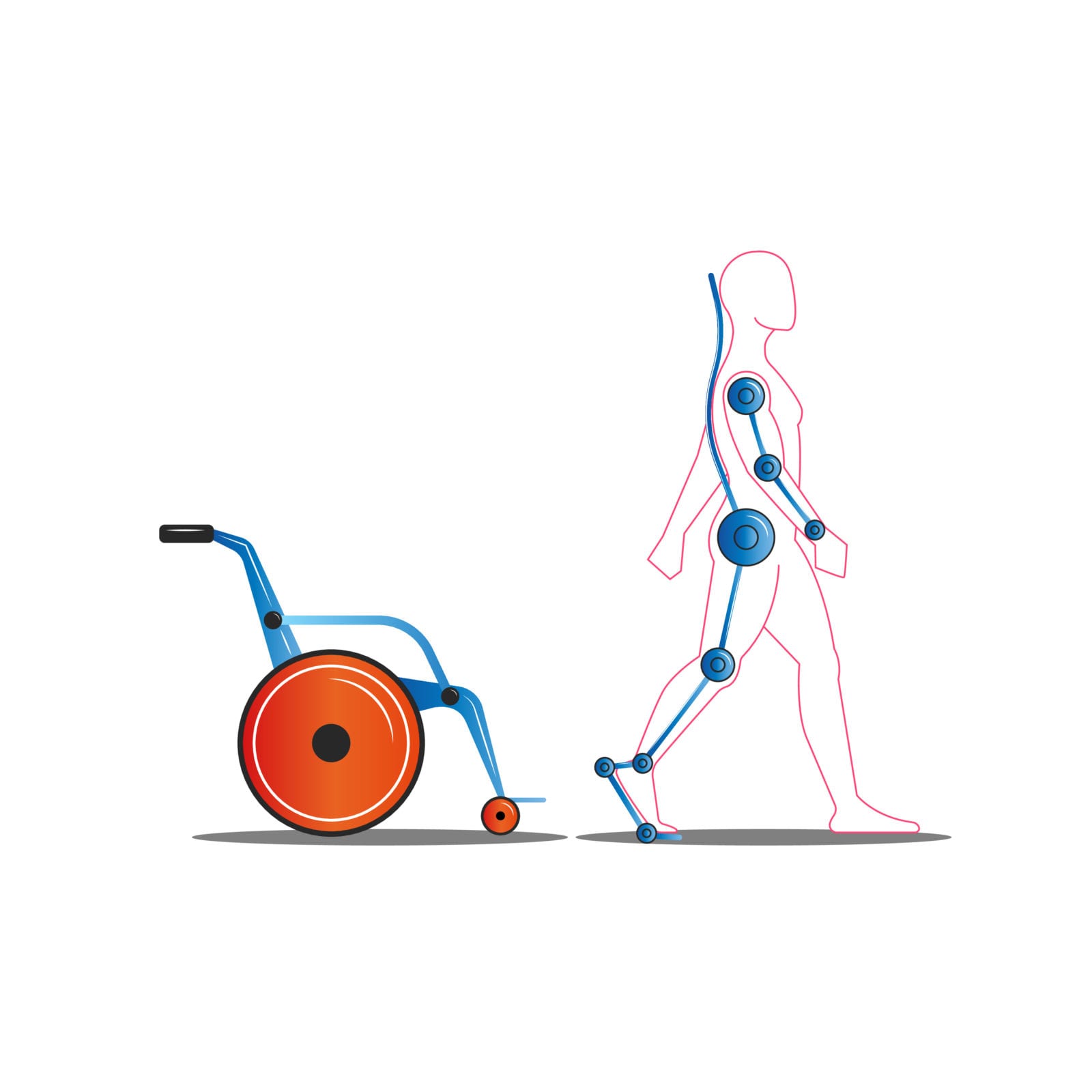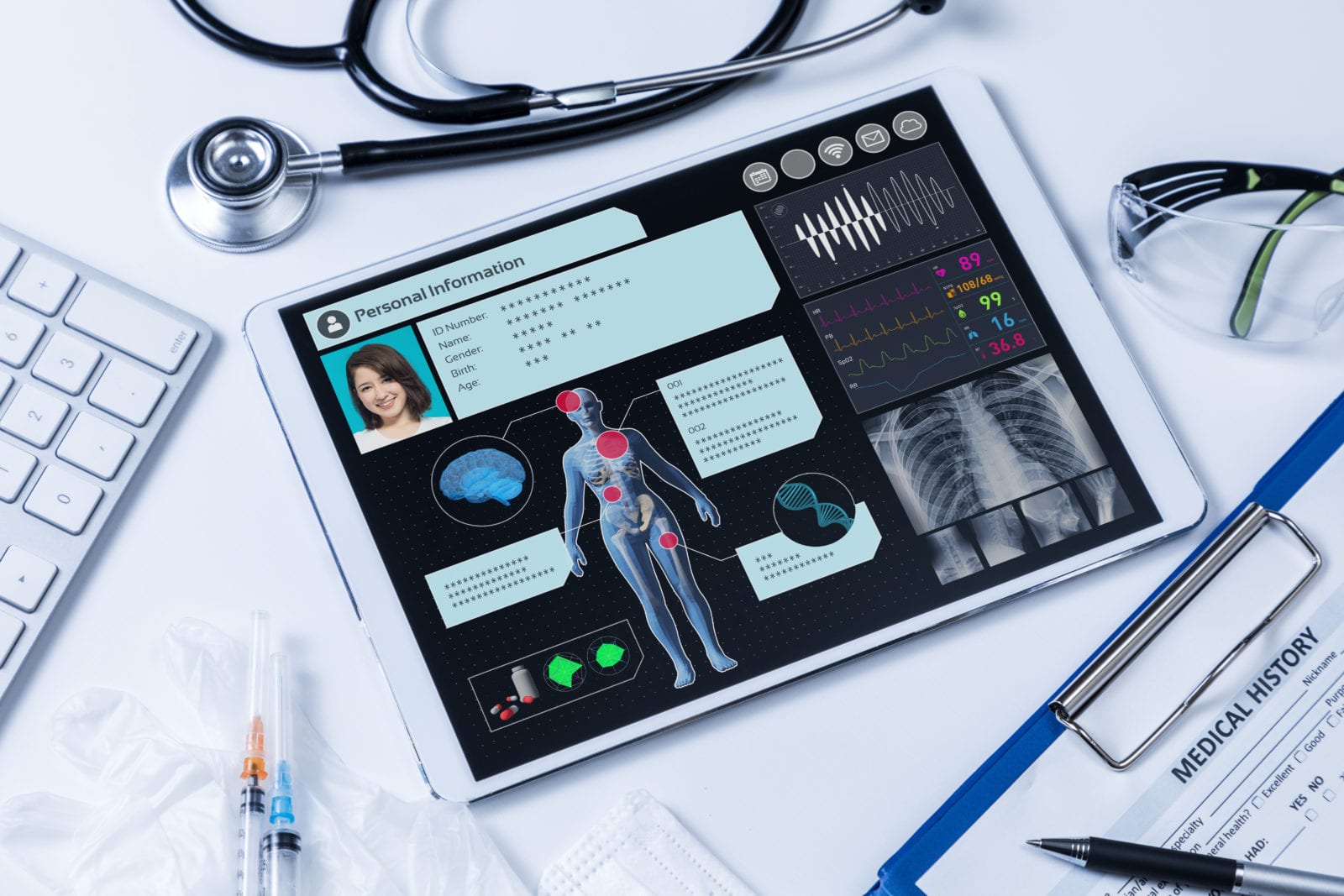
Not long ago, the thought of robots in healthcare may have seemed to be a work of science fiction. However, the past 20 years has shown us that it is not only viable, but the path forward in the healthcare industry. Robotics offer the ability to treat patients with improved accuracy, disinfect rooms with a reduced risk of infection, provide companionship and perform other tasks that augment the abilities of healthcare professionals. Although some worry about the chaos that could ensue with ill-programmed robots in a healthcare setting, a methodical implementation of these devices is improving patient care as humans learn how to best work with technology for a better path forward.
Background
 The history of fusing together technological advances with healthcare starts in the 1960s with the IBM 650 supercomputer that researched medical records to report on data abnormalities which could then be researched in closer detail by a physician. As technology continued to develop, healthcare application remained top-of-mind and by 1974, the first CT scanners were released allowing detailed imaging of specific cross-sectional images of bones, blood vessels and soft tissues inside a patient. Throughout the 1980s and 1990s, researchers worked with developers to apply robotics to the healthcare industry, and in 1999 the da Vinci Surgical system was developed to perform minimally invasive surgeries. This signaled a major step forward for the healthcare robotics industry and ushered in a wave of innovations to occur throughout the 2000s up until today. Now, the robotics and healthcare fields are merging as developments are made each day with the end goal of providing the best patient care possible.
The history of fusing together technological advances with healthcare starts in the 1960s with the IBM 650 supercomputer that researched medical records to report on data abnormalities which could then be researched in closer detail by a physician. As technology continued to develop, healthcare application remained top-of-mind and by 1974, the first CT scanners were released allowing detailed imaging of specific cross-sectional images of bones, blood vessels and soft tissues inside a patient. Throughout the 1980s and 1990s, researchers worked with developers to apply robotics to the healthcare industry, and in 1999 the da Vinci Surgical system was developed to perform minimally invasive surgeries. This signaled a major step forward for the healthcare robotics industry and ushered in a wave of innovations to occur throughout the 2000s up until today. Now, the robotics and healthcare fields are merging as developments are made each day with the end goal of providing the best patient care possible.
Surgery Robots

It may be hard to fathom a task as important as surgery being trusted to a robot, but the development in healthcare robotics has brought us to a point where robotic assisted surgeries are safer than similar operations performed without robotic assistance. As more hospitals are noting the benefits of these devices the more they are being utilized in operating rooms. This technology has seen a recent boom that is expected to continue as sales for surgical robots are expected to reach about $6 billion this year.
One of the most renowned surgery robots is the DaVinci Surgical System. This robot allows surgeons to perform complex, minimally invasive procedures with extreme accuracy and precision. The robot has been tested thousands of times and has performed thousands of procedures, proving its efficacy and safety. Today there are more than 1700 DaVinci systems installed in hospitals around the world and almost 1 million patients have been operated on by this robot. The DaVinci System is also considered the leading method for various operations with 86% of urology residency programs in the US owning a DaVinci system.
Some of the noted benefits of using a robot for a surgical procedure include the ability to precisely measure incisions to a depth no longer than needed, the ability to eliminate surgeon errors by leveraging surgical software, and the ability to complete a surgery in a less invasive manner due to intricacy of its instruments. The DaVinci Surgical robot is a great example of the teamwork required between technology and healthcare workers to provide optimal patient care.
Delivery Robots
Anyone who has visited a college campus in the past two years, may be familiar with the recent boom of delivery robots, however, hospitals are also jumping on the trend by utilizing robots for deliveries within the hospital. Some hospitals are already using robots for meal delivery in wards where patients have limited mobility, while others are utilizing complex cabinet robots that house and deliver medications with high accuracy.
One of the most prominent delivery robots is the Aethon TUG Robot. This autonomous mobile robot is built on an omni-directional platform allowing the robot agile movement throughout a hospital. It is built to support a wide variety of carts and racks to work seamlessly with any already existing infrastructure at the hospital. Robots like TUG offer a benefit to hospitals by taking the burden of complex deliveries off hospital staff so they can focus on patient care tasks that require a human interaction. Delivery robots are already utilized in many large hospitals across the US, which is a testament to their ability to accurately provide the service they are designed to perform.
Disinfecting/Cleaning Robots
Many of us know about the carpet cleaning Roomba robot, that vacuums a space autonomously without any user guidance whatsoever. The healthcare industry has its own version of these robots, but instead of picking up dirt and hair, it focuses on killing bacteria that cause hospital acquired infections (HAIs). HAIs pose a serious risk in hospital environments, infecting an average of 1 in 25 hospitalized patients across all settings. HAIs are a result of lingering bacteria and viruses in a hospital environment that infect a patient while they are in the hospital. Some of these infections can be very serious, with an estimated 99,000 deaths per year in the United States attributed to HAIs.
Autonomous robots such as the UVD Robot, provide a helpful, hands-off solution to disinfecting hospital rooms after a patient stay. UVD Robots, a Danish robotics company, created an autonomous UV light robot that emits UVC rays at an output level that destroys any microorganisms in its path. Some of these robots are already being used in the wake of COVID-19, offering a no-touch solution to disinfecting potentially hazardous hospital rooms where infected patients were staying.
Social Companion Robots
Another way robots are being used in healthcare is as a reliable companion for social interaction. Many companies have developed therapeutic robots that utilize advances made by artificial intelligence for human conversation. These robots have various features such as cameras, sensors and microphones that allow users to interact with them, keep them company when healthcare workers are busy tending to other patients, and some of these companions even have the ability to remind patients to take their medicine.
Many see social companion robots as a great tool to help busy nursing homes care for their patients, many of whom suffer from dementia and Alzheimer’s. The consistent and ever-present social interaction provided by these robots helps to keep patients engaged which helps these patients cope with some of the day-to-day difficulties of these illnesses. As the healthcare industry learns more about the mental implications that support a patient’s rehabilitation, the more these social companion robots will be seen in long-term care facilities, inpatient clinics and other applicable healthcare environments.
Wearables
 Wearables are a direct interaction between an individual and a unit of technology. Some common examples of this are heart rate monitors, pedometers, health watches, etc. These easily accessible items are great ways to track athletic performance during exercise and can show health trends over a period of time. The latest version of the Apple Watch is a great example of the future of this industry, by achieving a built-in electrocardiogram that monitors heart performance and can notify users of any irregularities. The ability to gain instant feedback on health performance is a huge step forward for wearable technology, and companies like Apple continue to push the boundaries of what small consumer wearables are capable of.
Wearables are a direct interaction between an individual and a unit of technology. Some common examples of this are heart rate monitors, pedometers, health watches, etc. These easily accessible items are great ways to track athletic performance during exercise and can show health trends over a period of time. The latest version of the Apple Watch is a great example of the future of this industry, by achieving a built-in electrocardiogram that monitors heart performance and can notify users of any irregularities. The ability to gain instant feedback on health performance is a huge step forward for wearable technology, and companies like Apple continue to push the boundaries of what small consumer wearables are capable of.
Another example of wearables for the healthcare industry are exoskeletons. Once a concept of science fiction exoskeletons are here and already being used on a daily basis in the healthcare industry. The first working prototypes were developed in the 1960s and 70s and have now developed to provide modern assistance to a wide variety of patients.
One example of a futuristic exoskeleton that is providing support for patients today is the HAL 5 Hybrid Assisted Limb. This impressive exoskeleton works by detecting the electrical impulses from the brain that indicate movement and provides instant support to the limb that is to be moved. This device has already been used to rehabilitate patients recovering from stroke, or those who had their movement impaired due to vertebrae damage or paralysis. Scientists also note that this technology can be used as a preventative device as well, providing leg and back augmentation for laborious tasks. Given the developmental trajectory of exoskeletons, consumers can expect to see various types of strength augmentation wearables such as these, used more frequently in the healthcare setting.
Electronic Healthcare Records (EHRs)
 Although EHRs aren’t technically robots, they offer some of the earliest examples of technology merging with healthcare. EHR software allows hospitals to utilize a singular medical platform to accomplish the various workflows necessary during a patient interaction, all while working off a singular, consistent patient chart. For example, if a patient is admitted to the ER, transferred to a surgical unit, and then later brought back for multiple physical therapy sessions at an outpatient clinic, the single patient chart will house all of the information from each of those encounters.
Although EHRs aren’t technically robots, they offer some of the earliest examples of technology merging with healthcare. EHR software allows hospitals to utilize a singular medical platform to accomplish the various workflows necessary during a patient interaction, all while working off a singular, consistent patient chart. For example, if a patient is admitted to the ER, transferred to a surgical unit, and then later brought back for multiple physical therapy sessions at an outpatient clinic, the single patient chart will house all of the information from each of those encounters.
Additionally, all of the billing workflows performed by a hospital are completed with this software as well, allowing hospitals to capture more specific information from patient interactions and provide more accurate billing information. As a result of an EHR implementation, hospitals experience improved patient interactions, code more accurate data per account for billing purposes and capture long-term efficiencies from standardized workflows and best practices built into these EHR systems.
Today, most large hospitals in the US have chosen 1 or multiple EHRs to best serve their inpatient and outpatient care needs. The modern hospital is now supported by large IT teams made up of analysts who are certified in a specific application of their hospital’s EHR software. Their job is to work with the professionals for their application to make updates, fix issues and generally support that area of the hospital from an EHR perspective.
Navigating the Future with Robots
Given the rapid developments occurring in this industry; doctors, developers and patients are encouraged by the positive results from merging technology and healthcare. Experts warn that as technology advances and we begin to rely more on its capabilities, humans must continue to sharpen their skills in both healthcare and robotics to properly navigate these colliding worlds and keep patient care at the center of all advancements. This collaboration between technology and humans is the future of healthcare, bringing a new sense of optimism as the healthcare industry continues to see patient care improve through the development of new technology. A prime example of modern robotics use is the innovation seen during the COVID-19 pandemic.
